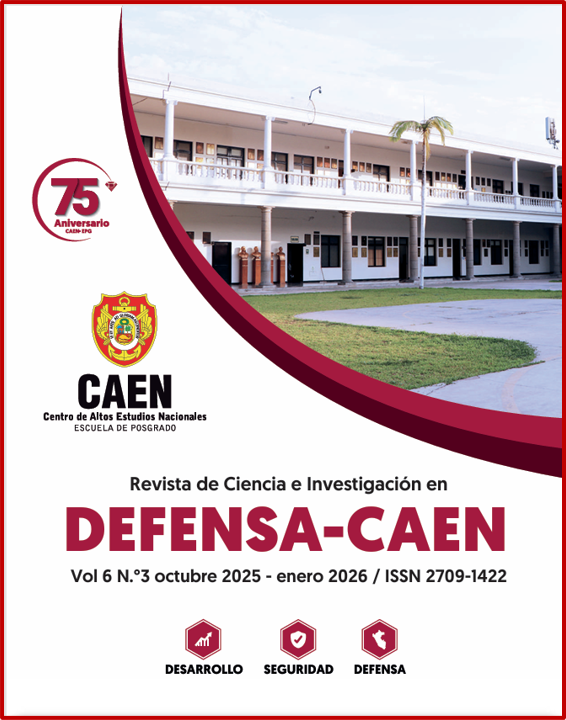Impact of anti-narcotics agreements, conventions, and plans between the Republic of Peru and the United States of America: a Peruvian perspective
DOI:
https://doi.org/10.58211/a1wz1h72Keywords:
Counter-narcotics agreements, agreements, Peru, drug trafficking, United StatesAbstract
This study examines the influence of anti-drug treaties signed between Peru and the United States in the context of the fight against drug trafficking, covering the period from 1970 to 2023. Through the analysis of historical archives, official documents, and technical reports, it studies the evolution of these policies and their impact on Peruvian society, both socially and institutionally. It takes into account how these bilateral agreements have shaped and conditioned Peru's strategy against drug trafficking, influencing the design of public policies, the strengthening of security institutions, and the deployment of joint eradication and control operations. The study evaluates both the achievements made, such as improvements in technical cooperation and the provision of resources, as well as structural limitations, the weak sustainability of alternative programs, and dependence on external agendas. The approach employed highlights the need to thoroughly understand the country's political, economic, and social context in order to adequately assess the implications of international collaboration on anti-drug efforts. In this way, the analysis offers a critical and reflective view of the real effects of the joint efforts between the two countries over more than five decades.
References
Antezana, J. (s. f). El narcotráfico y la violencia en el Perú [Diapositiva de PowerPoint]. Ministerio Público Fiscalía de la Nación.
Archivo Nacional de Tratados Embajador Juan Miguel Bakula Patiño (s. f). Drogas. https://apps.rree.gob.pe/portal/webtratados.nsf
BBC Mundo, (15 de enero de 2016). "Vaticano", el aliado peruano de Pablo Escobar, sale libre tras 22 años y anuncia serie de TV. https://www.bbc.com/mundo/noticias/2016/01/160114_america_latina_peru_vaticano_demetrio_chavez_penaherrera_libre_ppb
Bowes, C. (12 de mayo de 2019). Qué buscaba originalmente la “Guerra contra las drogas” que el presidente de EE.UU. Richard Nixon declaró en 1971. BBC News. https://www.bbc.com
Comisión Nacional para el Desarrollo y Vida sin Drogas. (2021). Análisis de compra-venta de hoja de coca en el Perú. https://cdn.www.gob.pe/uploads/document/file/2055143/Art.1-AN%C3%81LISIS%20DE%20COMPRA-VENTA%20DE%20HOJA%20DE%20COCA%20EN%20EL%20PER%C3%9A.pdf.pdf
Comisión Nacional para el Desarrollo y Vida sin Drogas. (2024). Perú, Monitoreo de Cultivos de Coca 2023. https://cdn.www.gob.pe/uploads/document/file/6447242/5639121-superficie-cultivada-con-arbusto-de-hoja-de-coca-monitoreada-en-2023.pdf?v=1719440817
del Prado Coll, A. N. (1999). El narcotráfico en el Perú: estrategias conjuntas de las Fuerzas Armadas y la policía nacional pra su erradicación. Boletín de información, (260), 7.
INEI (s. f). Tráfico de Drogas (Estadísticas). https://www.inei.gob.pe/estadisticas/indice-tematico/drug-dealing/
Oficina de Naciones Unidas contra la Droga y el Delito (2008). Droga y Delitos en el Perú. https://www.unodc.org/documents/peruandecuador/Informes/revista_2008o_09-04_08.pdf
United Nations Office on Drugs and Crime. (2023). Global Report on Cocaine 2023. https://www.unodc.org/documents/data-and analysis/cocaine/Global_cocaine_report_2023.pdf
Downloads
Published
Issue
Section
License
Copyright (c) 2025 Romina Yanira Gomero Lara

This work is licensed under a Creative Commons Attribution 4.0 International License.
La Revista de Ciencia e Investigación en Defensa está afiliada a la Licencia Creative Commons CC Reconocimiento 4.0 (CC BY). Esta licencia permite a los reutilizadores distribuir, remezclar, adaptar y construir sobre el material en cualquier medio o formato, siempre que se le dé la atribución al creador. La licencia permite a los autores mantener sus derechos y hacer el uso comercial de sus artículos.








